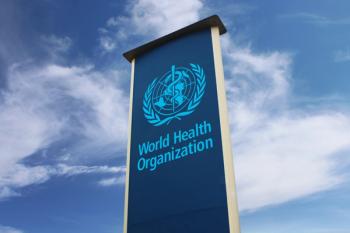
In Advanced NSCLC, Forgoing Treatment Leads to Increased Health Care Utilization
A new report underscores how treatment decisions for non-small cell lung cancer (NSCLC) affect patients’ health care utilization and costs.
A notable percentage of people with non-small cell
The findings, which were presented recently at the
Julie Vanderpoel, PharmD, MPA, of Janssen Scientific Affairs, and colleagues, noted that NSCLC represents up to 85% of all lung cancer cases. While therapies such as surgery, radiation therapy, and chemotherapy have long been a part of lung cancer care, newer treatment options include targeted therapy and immunotherapy, the authors noted. Yet, the availability of new treatments has not been able to reverse the stark survival data for NSCLC. Just 26% of people with NSCLC are alive after 5 years, and the numbers are substantially lower for people with stage III and IV NSCLC, Vanderpoel and colleagues noted. For patients who opt against treatment, the mean and median survival is only about 6 months.
The investigators wanted to know how the current treatment landscape for people with NSCLC translates into health care resource use and cost, both for people with NSCLC generally and for people who opt for or against treatment. To find out, they consulted claims databases of both commercial insurers and Medicare and Medicaid, and retrospectively analyzed patient costs both before and after a patients’ lung cancer diagnosis. The study included patients whose diagnosis came after January 1, 2015, in order to ensure the report reflected recent trends.
A total of 32,019 patients met all of the study’s inclusion standards, and 12,501 of those patients had advanced NSCLC. The patients had a mean age of 67.2 years and the advanced cohort had a mean age of 65.7 years. The mean baseline Quan-Charlson Comorbidity Index scores of participants was 2.1 for the entire cohort and 1.7 for the advanced NSCLC cohort. None of the patients had metastatic disease at baseline, per study protocols. During the 12-month pre-diagnosis baseline period, the participants had an average all-cause health care cost of $1857 per patient per month (PPPM), and those with advanced disease had index-period health care costs averaging $1387 PPPM.
Overall, 65% of patients in the study received treatment for their cancers over the average observation period of 13.3 months. About half (50.7%) of participants had observed metastatic disease during the post-index evaluation period, including 56% of people who received treatment and 40.7% of people who went untreated.
Among people with advanced cancers, 69.2% received treatment over a mean follow-up period of 9.5 months. Of those, 94.2% of treated patients and 100% of untreated patients reported metastatic disease.
Of all patients, tumor removal surgery was the most common treatment. Among the advanced cohort, radiation therapy and antineoplastic therapy were most common.
The investigators found that the advanced NSCLC cohort had higher health care utilization. In both the overall and advanced cohorts, those who went untreated had higher rates of inpatient hospital stays, longer hospital stays, and higher numbers of emergency department visits, Vanderpoel and colleagues found.
Overall, patients had an average PPPM cost of $14,591, and those with advanced cases had an average cost of $22,350 PPPM. Among all patients, treated patients had costs just above the average ($15,050 PPPM), but untreated patients had slightly lower costs ($13,740), a reduction in spending attributable to lower pharmacy costs.
However, among patients with advanced cancers, treated patients had lower-than-average costs of $21,973 PPPM, while those who went untreated had PPPM costs of $23,196.
The authors said the increased hospital utilization of untreated patients, particularly those with advanced cancers, may be an indication of poorer quality of life in that population.
“These findings have important implications to population health decision makers regarding the value of innovative medications on the outcomes and quality of care for patients with advanced NSCLC,” the authors concluded.
Reference
Vanderpoel J, Vadagam P, Emond B, et al. Healthcare utilization and costs of untreated patients with non-small cell lung cancer and advanced non-small cell lung cancer. Presented at: AMCP Nexus 2022; October 11-14, 2022; National Harbor, MD. Abstract C11.
Newsletter
Stay ahead of policy, cost, and value—subscribe to AJMC for expert insights at the intersection of clinical care and health economics.













































